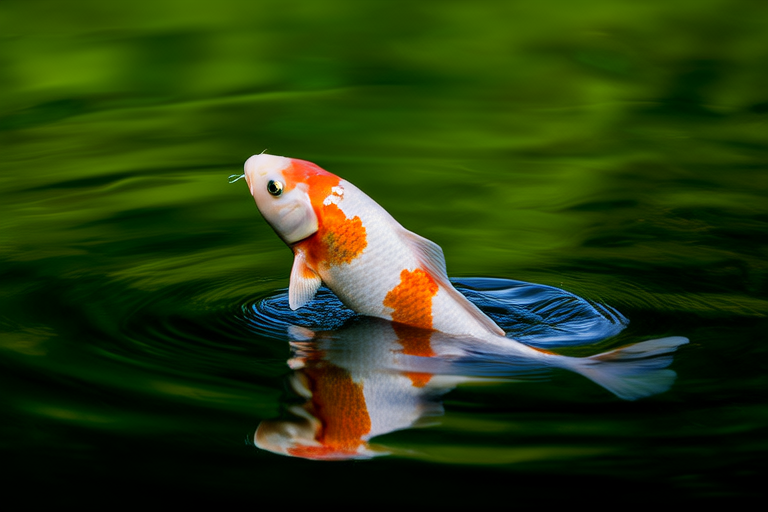From Pond to Pal: Everything You Need to Know About Koi Care
Welcome to the fascinating world of koi fish! These colorful, graceful creatures have captivated hobbyists and enthusiasts alike for centuries. Known for their vibrant hues and serene presence, koi are more than just ornamental fish; they’re companions that bring joy and tranquility to any pond. Whether you’re a novice or an experienced aquarist, this guide will provide you with everything you need to know about koi care, from setting up the perfect pond to maintaining optimal water conditions and beyond.
Introduction to Koi Fish
Koi (Cyprinus carpio) are a domesticated variety of common carp, selectively bred for their striking colors and patterns. Originating in Japan, these fish have become popular worldwide due to their beauty and hardiness. They can live up to 30 years and grow quite large, sometimes reaching lengths of over three feet. Their lifespan and size make them a significant commitment, but the rewards of caring for these magnificent creatures are well worth it.
Ideal Pond Setup
Creating the right environment is crucial for the health and happiness of your koi. A well-designed pond should mimic their natural habitat while providing ample space for swimming and hiding. Here’s what you need to consider:
- Pond Size: Koi require at least 200 gallons of water per fish. The larger the pond, the better, as it allows for more stable water conditions and reduces stress on the fish.
- Depth: Aim for a depth of at least 4 feet to prevent freezing in winter and overheating in summer.
- Filtration System: A good filtration system is essential to maintain clean, healthy water. It should include mechanical, biological, and chemical filtration components.
- Aeration: Proper oxygenation of the water is vital for koi health. Consider adding a fountain or waterfall to increase surface agitation.
- Shading: Protect your koi from direct sunlight by installing floating plants or using pond dye.
Water Quality Maintenance
Water quality is paramount to the well-being of your koi. Regular testing and maintenance are necessary to ensure a balanced ecosystem. Key parameters to monitor include pH levels, ammonia, nitrite, and nitrate concentrations, as well as temperature and dissolved oxygen levels.
Use a high-quality test kit to check these factors weekly. Maintain a pH between 7.2 and 8.5, keep ammonia and nitrite levels at zero, and limit nitrate concentration to less than 50 ppm. Additionally, perform partial water changes every few weeks to remove accumulated toxins.
Feeding Guidelines
Proper nutrition is key to keeping your koi healthy and vibrant. Feed them a balanced diet consisting of pellets, flakes, and occasional treats like vegetables. Adjust feeding amounts based on temperature and activity levels—feed less when temperatures drop below 50°F.
Choose high-quality food formulated specifically for koi. Avoid overfeeding, as excess food can pollute the water. Offer small portions several times daily rather than one large meal. This approach encourages natural foraging behavior and aids digestion.
Common Health Issues
Despite best efforts, koi may still encounter health problems. Familiarize yourself with some common ailments and how to address them:
- Fin Rot: Characterized by frayed or disintegrating fins, fin rot often results from poor water quality. Treat with antibiotics or anti-fungal medications.
- Ich: Also known as white spot disease, ich appears as tiny white spots on the body. Increase water temperature and treat with medication designed for this condition.
- Bloat: Caused by overeating or intestinal parasites, bloat manifests as swollen bellies. Fasting for a day or two followed by gentle feeding can help.
If you suspect illness, quarantine affected fish immediately and consult a veterinarian specializing in aquatic animals for accurate diagnosis and treatment.
Seasonal Care Tips
Adapting your care routine according to changing seasons ensures your koi remain healthy year-round:
- Spring: Begin by cleaning filters and aerators after winter dormancy. Gradually increase feeding as temperatures rise.
- Summer: Monitor water temperature closely; avoid sudden changes. Provide shade and extra aeration during hot spells.
- Fall: Reduce feeding frequency as temperatures cool. Prepare for winter by deepening the pond if necessary.
- Winter: Ensure the pond does not freeze completely. Use a de-icer if needed to maintain an open area for gas exchange.
How to Bond With Your Koi
Building a connection with your koi takes time and patience, but it’s incredibly rewarding. Spend regular time near the pond, feeding them gently by hand. Over time, they may begin to recognize and respond to your presence. Some koi even learn to follow you around the pond!
Creating a peaceful atmosphere around the pond also helps foster bonding. Place comfortable seating nearby so you can enjoy watching your koi swim gracefully through the water. Share stories about your experiences with fellow enthusiasts online or join local clubs where you can exchange tips and advice.
Remember, koi are sensitive to stressors like loud noises or sudden movements. Approach them calmly and consistently to build trust. With dedication and effort, you’ll develop a strong relationship with these beautiful creatures.
Conclusion
Caring for koi requires commitment but brings immense satisfaction. By understanding their needs and providing proper care, you can ensure your koi lead long, healthy lives filled with color and grace. Enjoy every moment spent with these delightful companions—they truly are pond pals that will enrich your life.
For further reading, explore books such as “The Koi Handbook” by Dr. Chris Andrews and “Koi: Everything About Selection, Care, Nutrition, Diseases” by Dr. Herbert R. Axelrod. These resources offer in-depth information tailored to both beginners and seasoned hobbyists.
